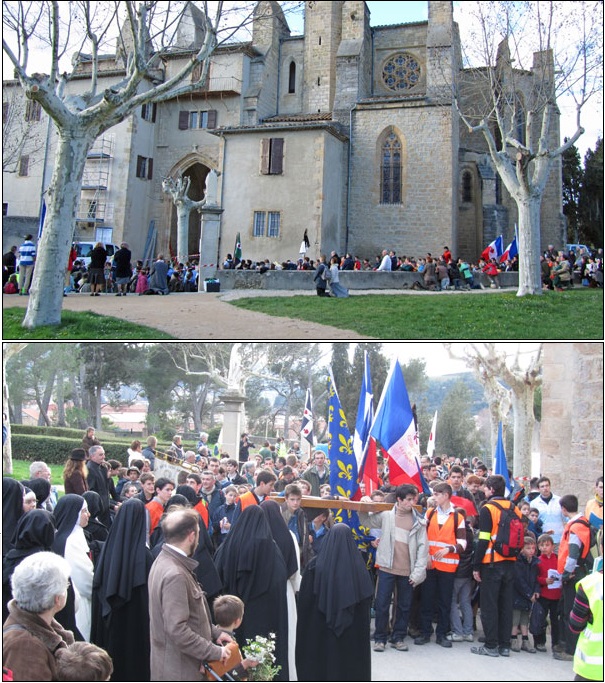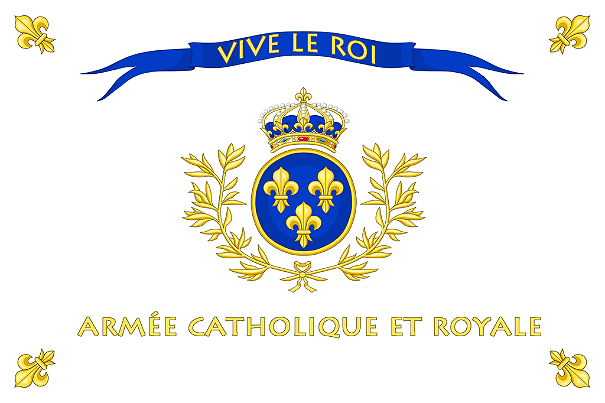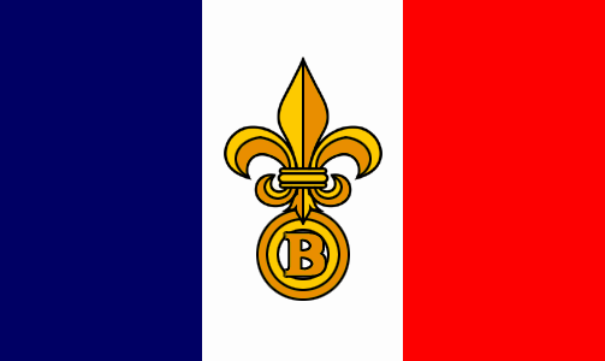Rennes-le-Château before Bérenger Saunière
Paul Smith
Revised 19 August 2014
The French anticlerical newspaper La Rappel dated 4 May 1881 gave the following news about Rennes-le-Château on page 2:
“The priests continue to think that the law does not apply to them. The local byelaw banning expressions of religious fervour outside church-precincts did nothing to deter the curé of Rennes-le-Château in the Aude from organising the Procession of St. Mark. When the local police-officer entrusted with the task of enforcing the byelaw turned up to request that the procession go back into the church, the curé replied that he could charge them with an offence if he wished, and simply continued the procession. The police-officer drew up a report on the spot and has sent it to the Public Prosecutor in Limoux.”
The curé of Rennes-le-Château in question would have been either Abbé Cézac (1879-1881) or Abbé Charles-Eugène Mocquin (1881-1884).
The French Revolution of 1790 was not only responsible for deposing the French Monarchy, but also marked the beginning of the end of the importance of Religion within French society, with the National Assembly issuing the Civil Constitution of the Clergy, making the Church the department of the State and taking over ownership of Church properties.
The 1801 Concordat agreement between Napoleon Bonaparte and Pope Pius VII tilted Church-State relations further in the favour of the state – consolidating religious freedom, the state would only pay clerical salaries if priests swore an oath of allegiance, and the Catholic Church gave up all its claims to the lands that were confiscated after 1790.
Following short spells of restoration, the French Monarchy finally ended when Henri Artois, Comte de Chambord lacked the necessary political strength to succeed (disputed King of France in August 1883 as Henri V). Following his death in August 1883 political opinion swung in favour of the Republic as being the major form of Government in France.
Bérenger Saunière’s arrival at Rennes-le-Château in 1885 marked the continuation of a clerical Anti-Republican presence in the village. Saunière was temporarily transferred to the seminary of Narbonne between January 1886 and July 1887 for making political sermons during the elections and after René Goblet – Minister of Religion – had deprived Saunière of his salary in December 1885.
In 1899 Saunière’s bishop put his name forward for promotion but his past misdemeanours with the local authorities had not been forgotten. The Sub-Prefect of Limoux refused to rubber-stamp his promotion, remarking: “He professes anti-government views. Attitude: militant reactionary. Negative recommendation.”
Saunière’s success at selling masses was due to Anti-Republican congregations located all over France – as well as in other countries – not being sympathetic with the actions taken against the Roman Catholic Church by the atheistic French Republic. These congregations supported priests like Saunière.
Devout 19th century French Roman Catholics still believed in their religion and needed priests to say masses for them – priests like Bérenger Saunière were highly respected and were offered financial assistance in exactly the same way that future priests of the 20th century – like Sedevacantist Mgr Marcel Lefebvre – were provided with financial support from rich benefactors. There was nothing unusual in this.
Saunière advertised for masses in many religious journals and magazines. His adverts have not been found because they were contained in the advertisement supplements that finished up in fireplaces.
The Belgian journalist Roger Crouquet reported in 1948 about Saunière: “At the end of the last century he had a rather original idea. He placed in foreign newspapers, especially in the United States, an advertisement announcing that the poor priest of Rennes-le-Château lived among heretics and had only the most meagre of resources. He moved the Christians of the whole world to such pity by announcing that the old church, an architectural gem, was heading for unavoidable destruction if urgent restoration work was not undertaken as soon as possible.” (Le Soir illustré, pages 16-22, Number 819, 1948).
Saunière left behind many account books thousands of pages long detailing his trafficking in masses activities. Some 820 pages exist on microfilm held in the Archives départementales de l'Aude, Carcassonne. The majority of the material is held by Antoine Captier in Carcassonne, the son-in-law of the late Noël Corbu, who inherited the Saunière archives from Marie Dénarnaud when she died in 1953.

Pilgrimage by the Society of St Pius X to Notre Dame de Marceille, 2008


Pilgrimage by the Society of St Pius X to Notre Dame de Marceille, 2011

Royalist Vendée Flag

General Boulanger Flag
|




